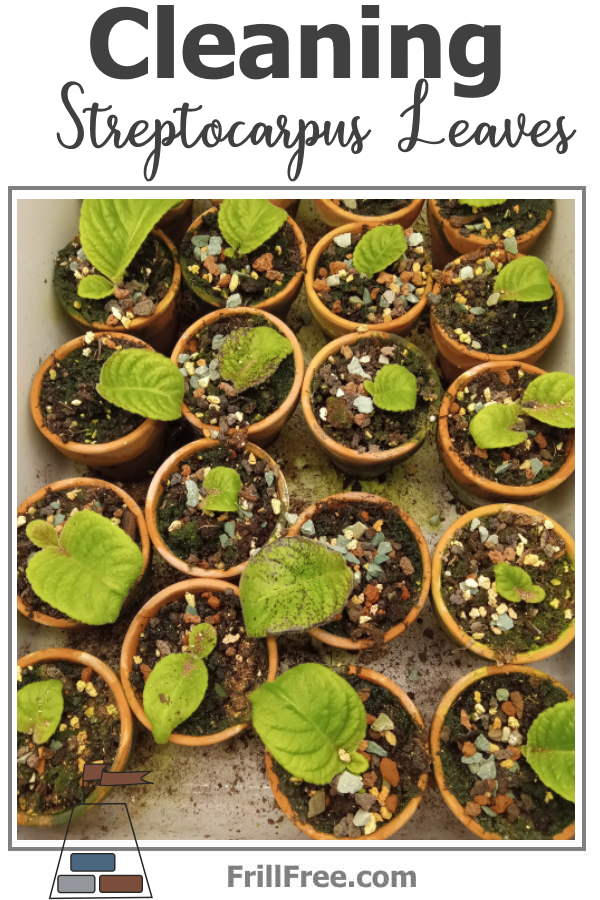- Homesteading
- Growing Ornamental Plants
- Cleaning Streptocarpus Leaves
Cleaning Streptocarpus Leaves
Of Dirt, Contaminants and Mulch
I am a participant in the Amazon Services LLC Associates Program, an affiliate advertising program designed to provide a means for me to earn fees by linking to Amazon.com and affiliated sites. Other links on this site may lead to other affiliates that I'm associated with.
Streptocarpus often need to be cleaned, and here's how to do it without damaging those fragile leaves.
Cleaning Streptocarpus leaves is difficult at times, due to their extreme hairiness and delicacy. I made the mistake of dumping the last bit of mulch from the bag onto them, with the dust and tiny fragments sticking to the hairs on the leaves.
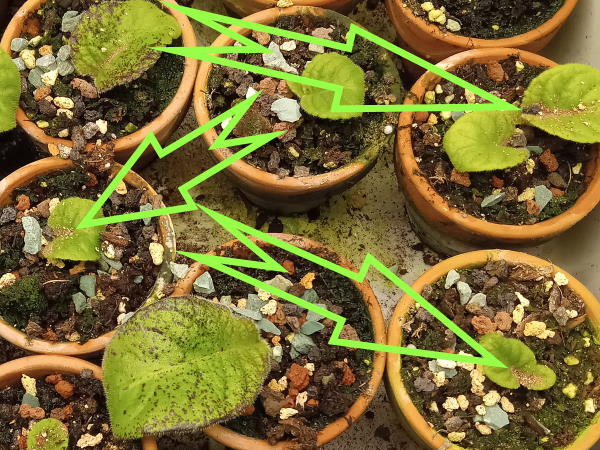 The mulch sticking to the hairy leaves
The mulch sticking to the hairy leavesSpraying it with water from the hand sprayer just made things worse. Then, the mulch particles stuck on like clay, and were impossible to remove without damaging the leaf itself. Luckily, I know a solution to this problem.
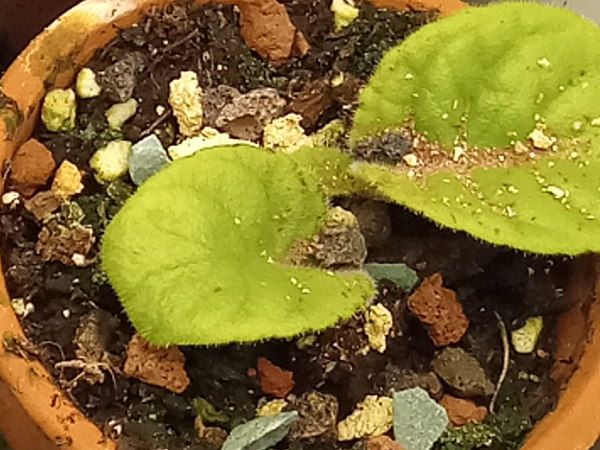
Using a stiff bristled paint brush, I can flick off the little crumbs of the mulch, and loosen the rest so it can be rinsed off with the sprayer.
In time, these leaves will be replaced by much larger ones, so it won't be an issue if a little bit of it remains. For now though, these tiny plants need every bit of green leaf they can muster, to keep photosynthesizing.
The Reason for Cleaning the Streptocarpus Leaves in the First Place
The soil I used for potting these seedlings into the tiny clay pots seems to have an issue with slimy green algae growing on the surface.
This hardens into a waterproof coating, preventing any moisture from reaching the roots. Underneath this coating, the soil can be quite dry, not good for a plant that prefers the soil to be moist at all times.
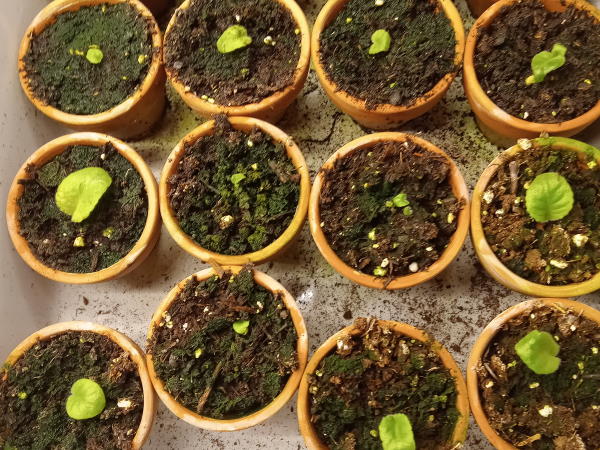
The solution is to use mulch of some kind. I had some lava rock that I've used as an additive to soil for extra drainage, and also as a mulch. This time, however, it was hard to place the mulch in exactly the right place, and not on the leaves.
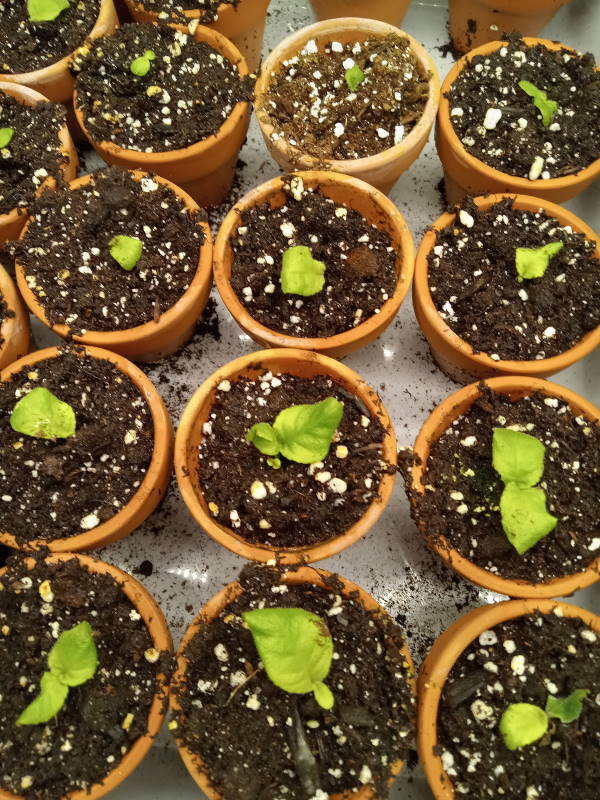 The right soil for Streptocarpus is well drained, yet has good water holding capacity.
The right soil for Streptocarpus is well drained, yet has good water holding capacity.This soil is much better for these moisture loving plants; good drainage, yet contains a water holding polymer to help re-wet the soil if it gets too dry.
I would use coir, or compressed coconut fiber rather than peat moss because the peat moss is much harder on the environment.
Coir fiber is a renewable resource. You may have to add perlite and other amendments to get it to the right combination of nutrients, but this is a good place to start.
The paint brushes came in a set of about 20 different ones, so I can test out several. I chose a few that I thought would work the best - slightly stiff, but not harsh. The softer ones with longer bristles probably wouldn't work, they would just bend instead of flicking the particles off.
Then, after loosening the bits of mulch, the rest will rinse off with the pressure of the sprayer, giving the plant more resources for growing.
The best time to do this type of cleaning is when the growth is maturing, rather than just new buds, which could be damaged by the action of the brush.
